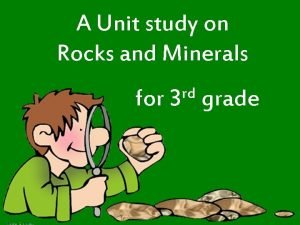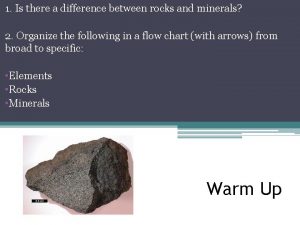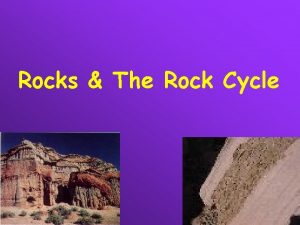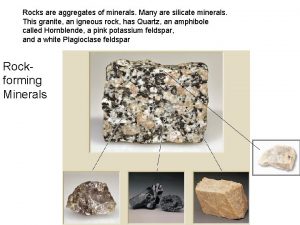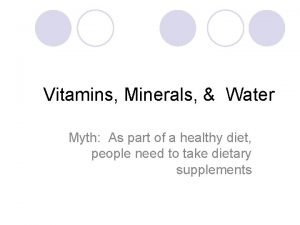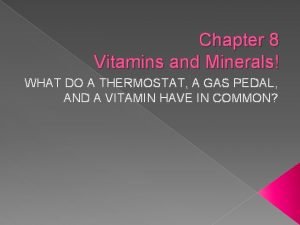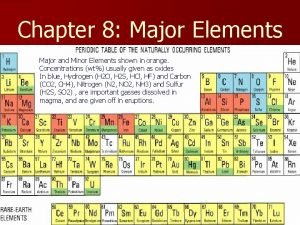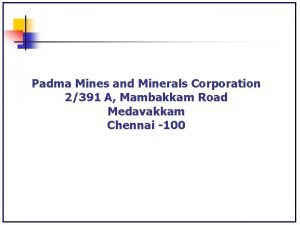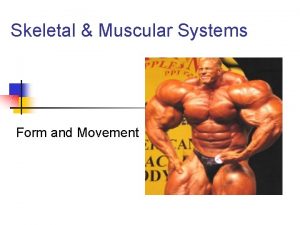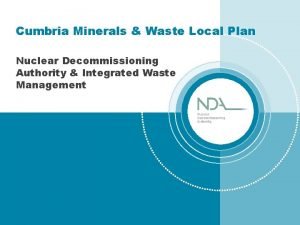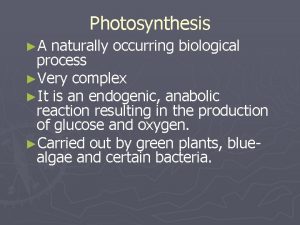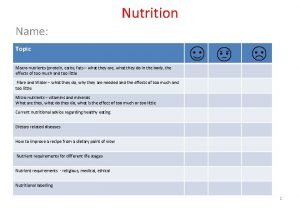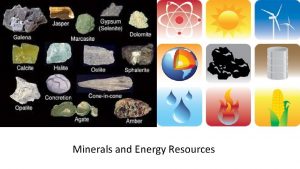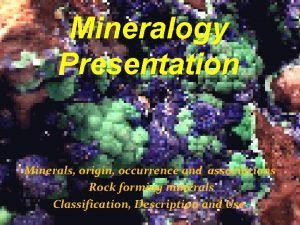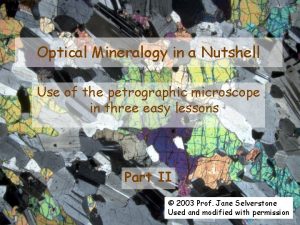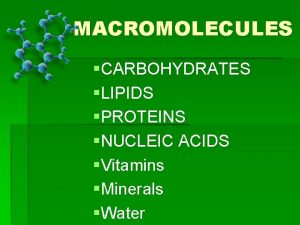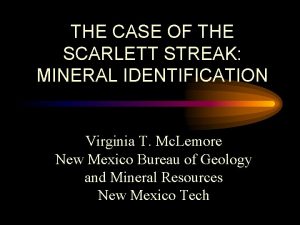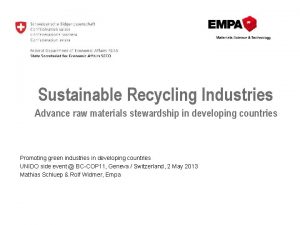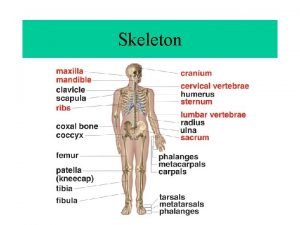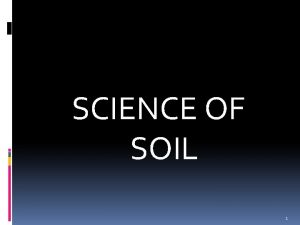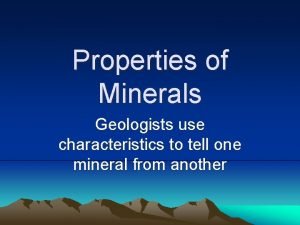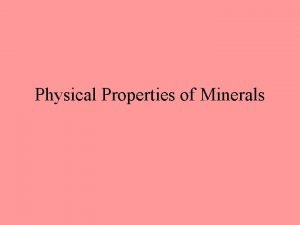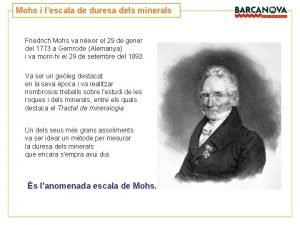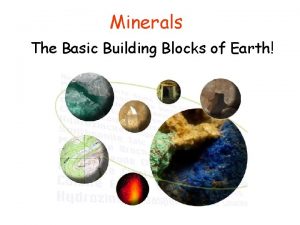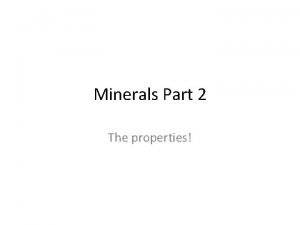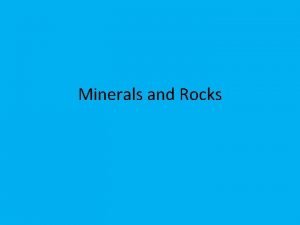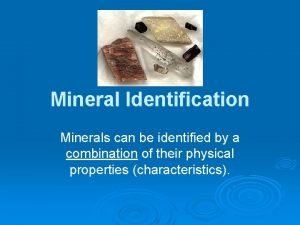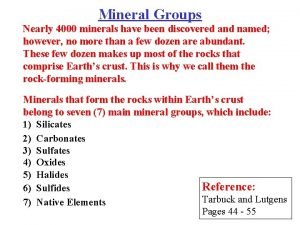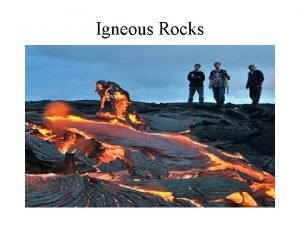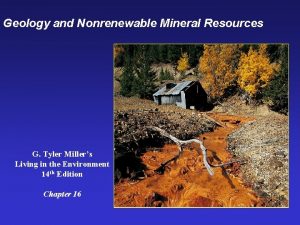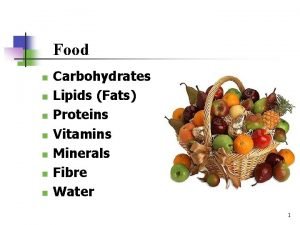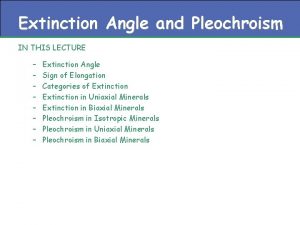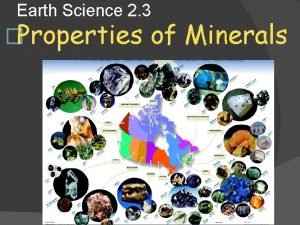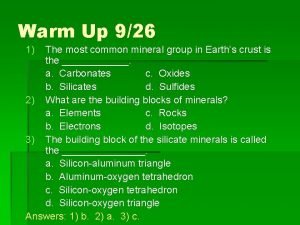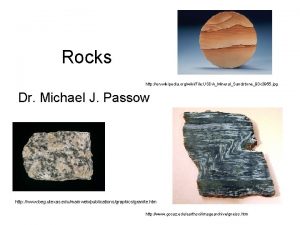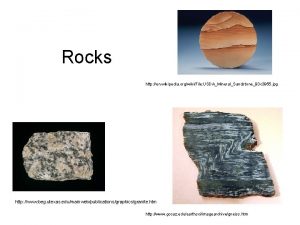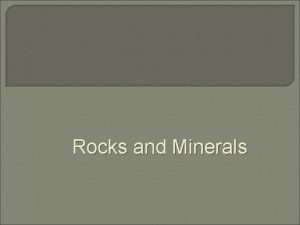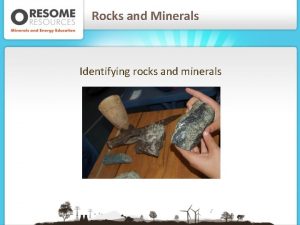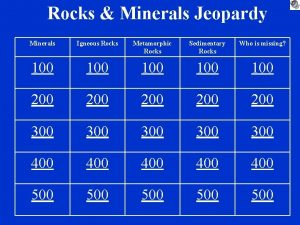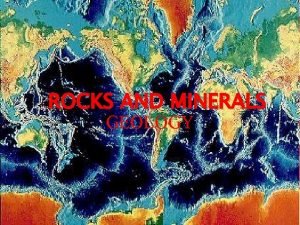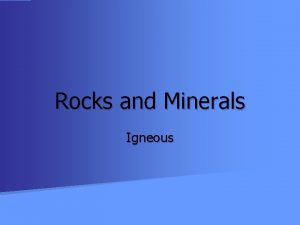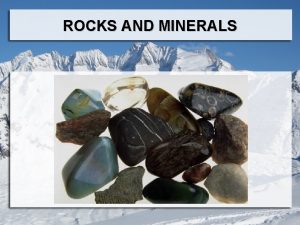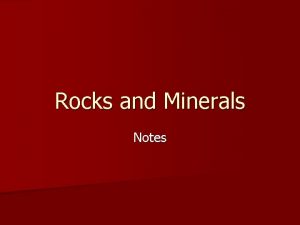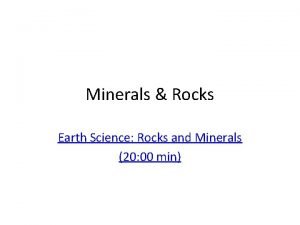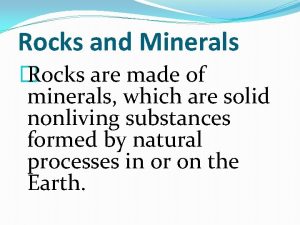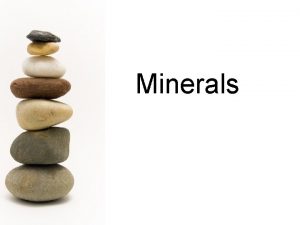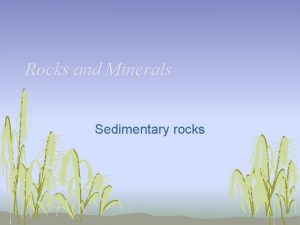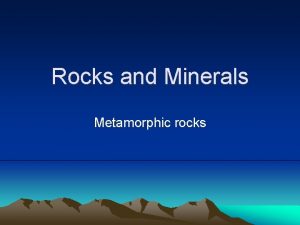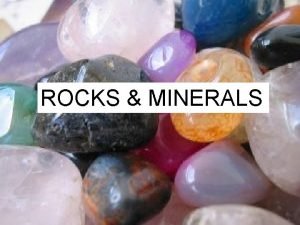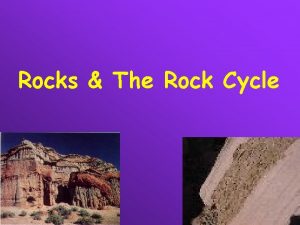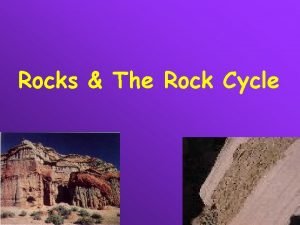Rocks and Minerals http en wikipedia orgwikiFile USDAMineralSandstone93

















































- Slides: 49

Rocks and Minerals http: //en. wikipedia. org/wiki/File: USDA_Mineral_Sandstone_93 c 3955. jpg http: //www. beg. utexas. edu/mainweb/publications/graphics/granite. htm http: //www. gccaz. edu/earthsci/imagearchive/gneiss. htm

Minerals In order for a substance to be consider a mineral, it must have the following 5 characteristics: üMust be solid üMust be inorganic üMust be naturally occurring üMust have a definite chemical composition üMust have a definite crystal shape

• Minerals are the basic building blocks of all rocks. • Oxygen is the most abundant by mass and volume (46%, 94%) • Silicon is second in mass (28%)

Mineral Properties • All mineral properties are determined by the INTERNAL ARRANGEMENT of ATOMS


Please grab the three (3) pieces of paper on the side of the room. Using a blue or black pen, please fill out the STEM survey.

Properties • Color – easiest property to identify but the most useless • Many minerals have the exact same color but are completely different.

Properties • Luster – the way the mineral shines in reflected light • Two types – • Metallic – Looks like metal, gold or silver in color • Nonmetallic – Doesn’t look like metal

Properties cont’d • Streak – color of the minerals powder when rubbed on a streak plate. • Will not always be the same color as the mineral sample • Example – Pyrite is gold in color but has a green/black streak

Properties cont’d • Cleavage – the tendency of a mineral to break, or cleave, in a flat plane -

Properties cont’d • Fracture – Irregular breakage • Looks a lot like breaking apart a clod of dirt or a cookie. • No pattern of breakage

Properties cont’d • Hardness – resistance to being scratched • Follows Moh’s Hardness Scale

Types of Minerals • Silicates – made up of primarily silicon and oxygen • Silica Tetrahedron – basic building blocks of all silicates (Si. O 4)

Other types of Minerals • Carbonates - • Iron Oxides -

Common Uses • Feldspar – used in ceramic and glass products, fertilizers, and soaps • Gypsum – used in drywall and plaster applications, cement, and fertilizer • Quartz – used in electronics, jewelry, and in powder form can be used as a thickening agent • Mica- used as electrical insulators, and as bonding agents in paints and flux in welding rods • Fluorite – used to make hydrofluoric acid, and powdered as a fluorine agent in municipal water systems and toothpaste • Sulfur – used in manufacturing processes, such a drug production and vulcanization of rubber

IGNEOUS ROCKS • Form by solidification and crystallization of melted minerals • Plutonic – formed underground • Also known as intrusive • - Cools slowly- LARGE CRYSTALS • - texture will be considered coarse

Volcanic – forms aboveground - also known as extrusive - Quick cooling means fine to no crystals - Texture is considered fine or glassy

Obsidian • Natural volcanic glass • Forms when lava cools very quickly • Usually dark, but small pieces may be clear • Fractures along curved (conchoidal) surface • Used as spear and arrow points, knives


Types of Magma - Felsic – - light in color - low in density - contains a lot of feldspar - Rocks include granite, pegmatite, and pumice

-Mafic - - dark in color - high in density - contains a lot of iron - Rocks include Gabbro, Basalt,

Vesicular – gas pockets

Rock Texture- texture is determined by crystal size not how the rock feels -NO ONE CARES HOW YOU FEEL when it comes to texture

Igneous Characteristics-MEMORIZE ME 1. Visible Scattered Crystals 2. Glassy texture 3. Visible gas pockets (vesicular)

Sedimentary Rocks Sedimentary Rock- formed from compaction and cementation of sediments or living organisms THREE MAJOR TYPES

Sedimentary Rocks - Clastic (fragmental) – made of sediments of other rocks that have been broken down - Classified by the size of the sediments that make up the rock

Sedimentary Rocks

Sedimentary Rocks Chemical(crystalline)- forms when water dissolves minerals, evaporates and leaves the mineral behind

Sedimentary Rocks Bioclastic (Organic) – made from the parts of living things, such as plants and animals

Sedimentary Rocks Processes that create sedimentary rocks - Compaction- pressing of sediments together by force

Sedimentary Rocks Cementation- gluing sediments together with some sort of natural process Super Cool Totally Groovy Cementation Animation

Sedimentary Rocks Stratification- when sediments pile up in layers

Sedimentary Rocks Fossils – evidence of life, often found in sedimentary rocks

Characteristics of Sedimentary Rocks 1. Visible Sediments

Characteristics of Sedimentary Rocks 2. Dull, Earthy colors

Characteristics of Sedimentary Rocks 3. Visible fossils

Characteristics of Sedimentary Rocks 4. Sediments in layers

ESRT- Sedimentary Rocks

Metamorphic Rocks • Formed by heat and pressure changing existing rocks • Regional – metamorphism that occurs over a large area that is exposed to heat and pressure • - causes severe metamorphism

Regional Metamorphism- Metamorphic Rocks

Regional Metamorphism- Metamorphic Rocks Contact- change that occurs when rocks come in contact with heat only - Subtle changes - Deformation only

Characteristics of Metamorphic Rocks 1. Bands of Crystals (color bands)

Characteristics of Metamorphic Rocks 2. Deformation

Characteristics of Metamorphic Rocks 3. Foliation- crystals in flaky layers

ESRT: Metamorphic Rocks

Rock Cycle



Content resources • • • Diamond/Graphite Image: http: //chemistry. tutorvista. com/organic-chemistry/carbon-compounds. html Sulfur - http: //depthome. brooklyn. cuny. edu/geology/core 332/minerals. htm Pyrite-http: //mineralminers. com/html/pytmins. stm Kaolin - http: //www. library. csi. cuny. edu/dept/as/mineral/nmws. htm Streak Image - http: //skywalker. cochise. edu/wellerr/mineral/hematite/6 hematite-streak 10. jpg Calcite - http: //skywalker. cochise. edu/wellerr/mineral/calcite 6. htm Cleavage - http: //www. minerals. net/mineral_glossary/cleavage. aspx Fracture - http: //geology. com/minerals/photos/quartz-conchoidal-482. jpg Moh’s Scale - http: //www. visionlearning. com/library/modules/mid 130/Image/VLObject-3337 -050515120556. gif Moh’s Image - http: //www. contempofloorcoverings. com/wp-content/uploads/2010/05/Mohs-Hardness-Scale. jpg Silica Tetrahedron - http: //www. all-around-us. com/images/sci/st-sio 4 m. jpg
 Rock cycle
Rock cycle Igneous metamorphic and sedimentary
Igneous metamorphic and sedimentary The rock cycle song
The rock cycle song Rocks
Rocks Difference between minerals and rocks
Difference between minerals and rocks Concept map of metamorphic rock
Concept map of metamorphic rock Poem about minerals and rocks 3 stanza
Poem about minerals and rocks 3 stanza What kind of rock is this
What kind of rock is this Rocks and minerals
Rocks and minerals Solid rock cycles
Solid rock cycles Rocks are aggregates of minerals
Rocks are aggregates of minerals Extrusive rocks
Extrusive rocks Lasa naviance
Lasa naviance Rurom
Rurom Http wikipedia org
Http wikipedia org Minerals sources functions and deficiency chart
Minerals sources functions and deficiency chart Http //mbs.meb.gov.tr/ http //www.alantercihleri.com
Http //mbs.meb.gov.tr/ http //www.alantercihleri.com Siat.ung.ac.id krs
Siat.ung.ac.id krs Chapter 8 vitamins and minerals
Chapter 8 vitamins and minerals Major and minor elements
Major and minor elements Absorbs water and minerals
Absorbs water and minerals Padma mines and minerals corporation
Padma mines and minerals corporation Stores minerals and anchors muscles
Stores minerals and anchors muscles Cumbria minerals and waste local plan
Cumbria minerals and waste local plan Resource that can be replaced
Resource that can be replaced Minerals and fuels
Minerals and fuels Minerals sources functions and deficiency chart
Minerals sources functions and deficiency chart Minerals and fuels
Minerals and fuels Importance of rocks
Importance of rocks Ntd nutrition
Ntd nutrition Is quartz uniaxial or biaxial
Is quartz uniaxial or biaxial Are vitamins and minerals macromolecules
Are vitamins and minerals macromolecules Streak of minerals
Streak of minerals Conflict minerals
Conflict minerals Storage of minerals
Storage of minerals Primary vs secondary minerals
Primary vs secondary minerals Cleavage minerals
Cleavage minerals Color properties of minerals
Color properties of minerals Pirita escala de mohs
Pirita escala de mohs The building block of the silicate minerals is _____.
The building block of the silicate minerals is _____. Fracture minerals
Fracture minerals Characteristic of minerals
Characteristic of minerals Is a rusty nail metallic or nonmetallic
Is a rusty nail metallic or nonmetallic Nearly 4,000 minerals have been named
Nearly 4,000 minerals have been named Igneous rock
Igneous rock Economic minerals
Economic minerals Carbohydrates minerals
Carbohydrates minerals Extinction angle is the angle between
Extinction angle is the angle between Properties of mineral
Properties of mineral Most abundant minerals in earth's crust
Most abundant minerals in earth's crust




